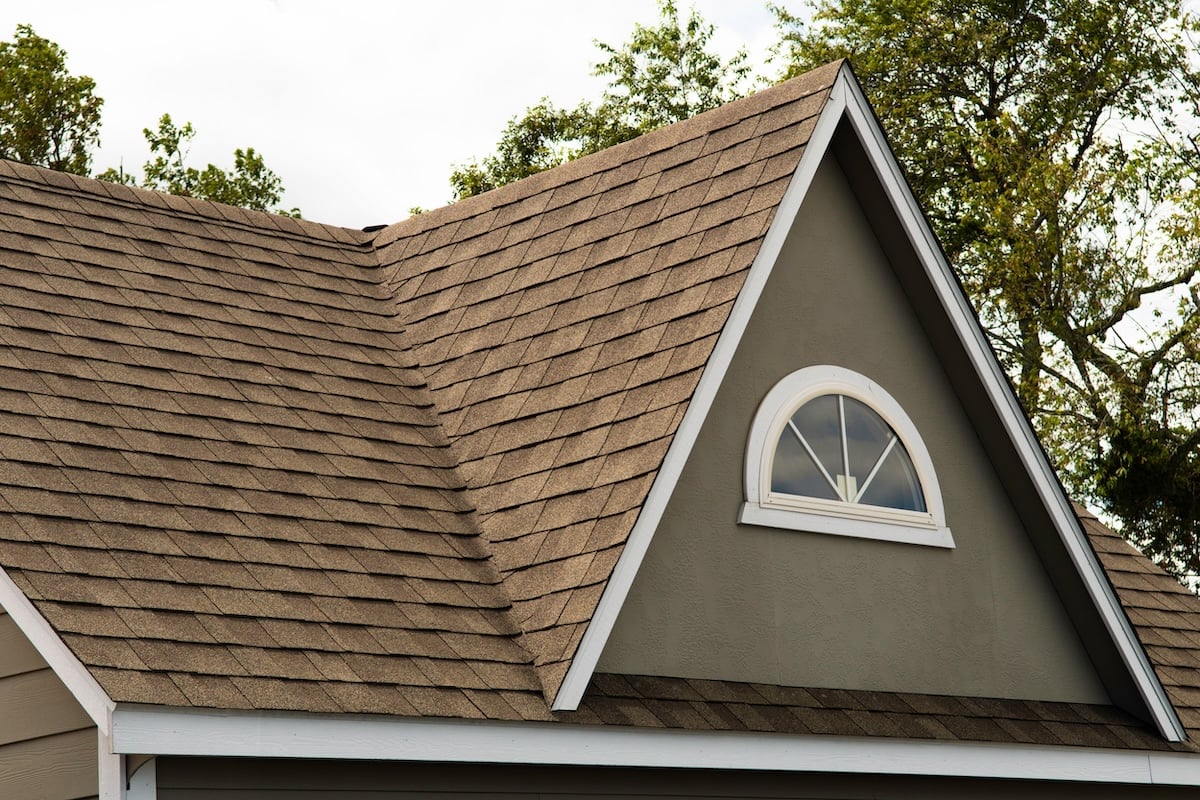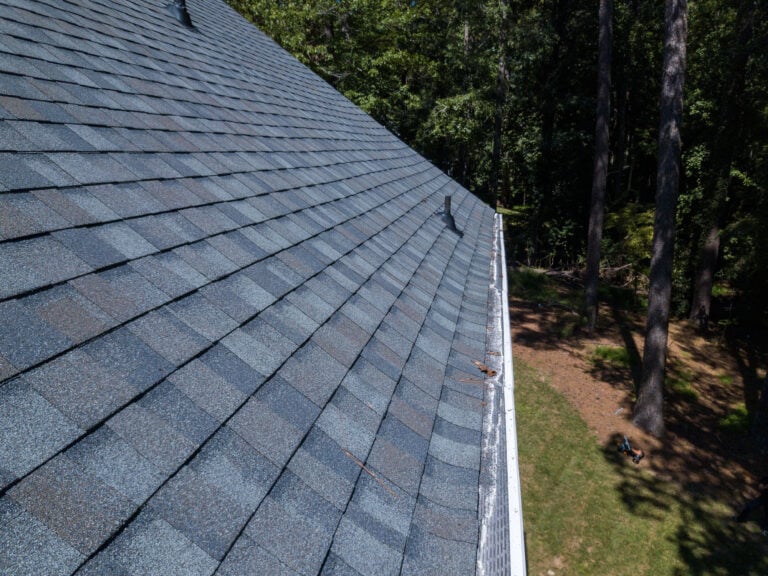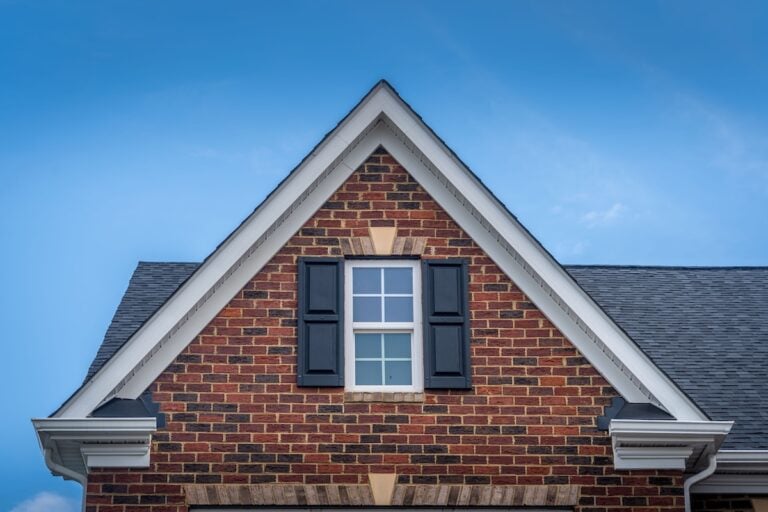Replacing your roof is a major project, and one of the first questions many homeowners have is, “How many shingles do I need?” Getting an accurate estimate of the number of shingles required is crucial to the success and cost-efficiency of your roof replacement.
This guide will walk you through the essentials of calculating how many shingles you need, breaking down key considerations and tips for getting it right. We’ll cover the following topics:
- Understanding shingle coverage
- How many shingles do I need? (a step-by-step guide)
- Factors that impact shingle requirements
🔎 Understanding Shingle Coverage
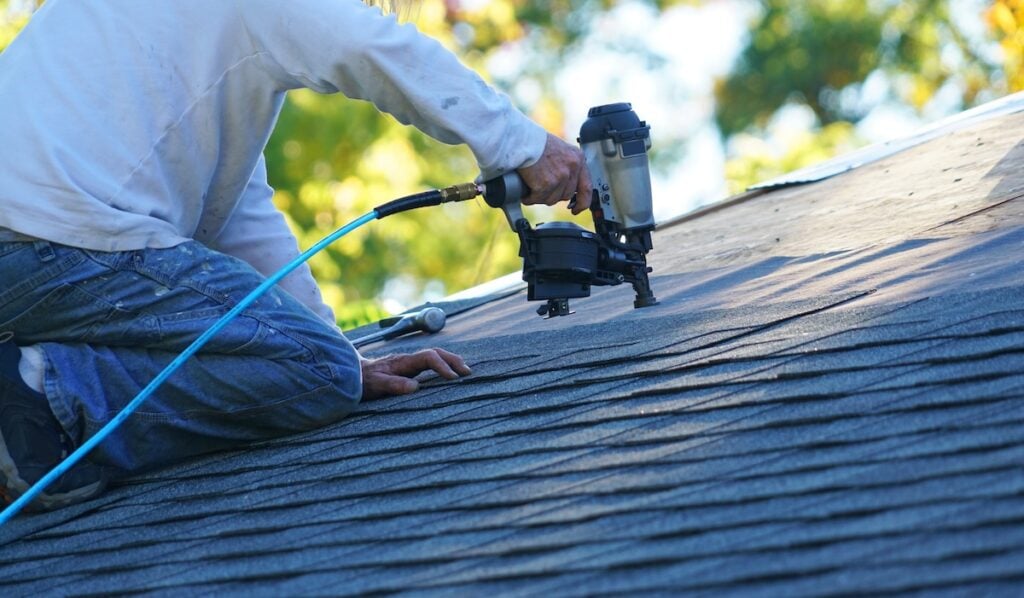
Shingles are typically sold by the bundle, and the amount of coverage they provide can vary depending on the type, style, and brand. In most cases, a single bundle of shingles covers 33.3 square feet, which means you will need three bundles to cover 100 square feet. This measurement is often referred to as a “roofing square,” a standard unit used in the roofing industry to simplify calculations for materials.
Understanding these measurements is important when planning a roofing project, especially if you’re estimating material costs or discussing needs with a contractor. Keep in mind that different types of shingles, such as architectural or three-tab shingles, may have slight variations in coverage, so always check the details specific to the brand you’re using.
To summarize:
- 1 roofing square = 100 square feet of roof area
- 3 bundles of shingles = 1 roofing square
Additionally, it’s always a good idea to account for some extra material to cover waste, cuts, and overlaps during installation. Proper planning ensures you have enough shingles to complete the job without unexpected delays.
Measure Your Roof’s Surface Area
Before determining the number of shingles, you need to measure your roof’s surface area accurately. Here’s how to do it:
- Measure Roof Dimensions: Measure the length and width of each roof section, multiply them to find the area, and add the sections together. Example: Length = 30 ft, Width = 40 ft → Area = 30 x 40 = 1,200 sq. ft.
- Adjust for Roof Pitch: For sloped roofs, multiply the total area by a roof pitch factor (e.g., 1.25 for a moderate slope). Example: 1,200 x 1.25 = 1,500 sq. ft.
- Account for Waste: Add 10–15% to account for cutting and overlaps. Example: 1,500 + 15% = 1,725 sq. ft.
✅ 4 Steps to Find Out How Many Shingles You Need

Knowing how many shingles you need is crucial to avoid overspending or running out mid-project. Follow these steps to accurately calculate the right amount for your roofing job.
1: Calculate Total Roofing Squares
The first step in determining how many shingles you’ll need for your roofing project is to calculate the total number of roofing squares. A roofing square is a standardized unit of measurement in roofing, and it represents 100 square feet of roof area. To figure out how many roofing squares your project requires, take the total area of your roof (measured in square feet) and divide it by 100. For example, if your roof has a total area of 1,725 square feet, you would perform the following calculation: 1,725 ÷ 100 = 17.25 roofing squares. This result represents the total number of roofing squares your roof comprises. Accurately calculating this number is essential as it forms the foundation for determining the number of shingles needed for the job.
2: Determine Bundles Needed Per Square
Once you know the total number of roofing squares, the next step is to calculate how many bundles of shingles you’ll need. Roofing shingles are commonly packaged and sold in bundles, with three bundles typically covering one roofing square. Using the total number of roofing squares calculated in the previous step, you can multiply that number by three to determine the total number of bundles required. For instance, if your roof has 17.25 roofing squares, the calculation would be as follows: 17.25 x 3 = 51.75 bundles of shingles. This calculation provides an estimate of how many bundles are necessary, ensuring you have enough material to cover the entire roof.
3: Round Up
When calculating the total number of shingle bundles needed, it’s important to round up to the nearest whole number. Since shingles are sold in full bundles and not partial ones, any fractional bundle in your calculation must be rounded up to ensure you have enough material. In the example above, the calculation resulted in 51.75 bundles. This number would be rounded up to 52 bundles, ensuring that you have enough shingles to complete your project without running out. Rounding up provides a safety margin, which is particularly helpful in accommodating any unexpected needs during the installation process.
4: Account for Special Situations
While standard calculations provide a good estimate for most roofs, it’s important to account for any special features your roof may have, such as ridges, hips, or valleys. These areas of the roof require additional shingles to ensure proper coverage and installation. To accommodate these features, you should plan to purchase extra bundles of shingles. Depending on the complexity of your roof’s design, adding 1–2 extra bundles to your total is a good rule of thumb. This additional material acts as a buffer, preventing delays caused by running out of shingles mid-project and ensuring that all parts of your roof are adequately covered. Proper planning for these special situations helps guarantee a smooth and efficient roofing process.
👉 Factors That Impact Shingle Requirements
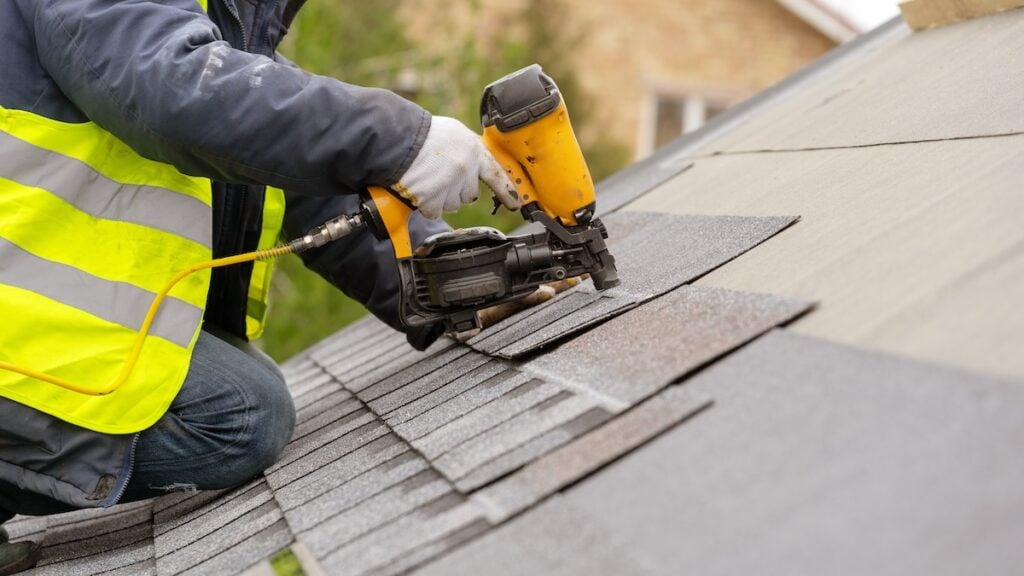
When planning your roof replacement, keep these factors in mind to refine your estimate further:
Roofing Material Type
The type of shingles you choose plays a significant role in determining the amount you’ll need. Asphalt shingles are the most common and typically cover about 33 square feet per bundle, but variations exist depending on the manufacturer and style. Wood shingles, on the other hand, have a different coverage rate and may require more bundles to cover the same area. Composite shingles, which combine multiple materials, can also vary in size and coverage. It’s essential to check the specifications of the shingles you select to ensure accurate calculations for your project. Always double-check the coverage listed on the packaging or consult with the supplier for precise details.
Roof Complexity
The design of your roof greatly impacts the number of shingles required. A simple, rectangular roof will be much easier to estimate, as there’s minimal waste from cutting. However, roofs with multiple valleys, ridges, hips, or dormers will require additional shingles to account for the extra cutting and overlapping needed to ensure complete coverage. Complex roof structures also typically result in more material waste due to the irregular shapes and additional seams. When planning, always consider the intricacies of your roof design and factor in some extra shingles for these areas.
Local Weather Conditions
Your region’s climate can influence how many shingles you’ll need for a durable and long-lasting roof. In areas prone to strong winds or storms, building codes may require additional shingle overlap or extra nails for better fastening. These precautions can slightly increase the number of shingles you’ll need to purchase. For example, high-wind areas may require shingles to be installed closer together or with reinforced edges, which could impact your material calculations. Always check with local regulations and weather-related guidelines to ensure your roof is prepared to handle the environmental challenges in your area.
Professional Input
Even with meticulous measurements and calculations, there’s always the potential for error when estimating the number of shingles your roof needs. Factors like roof slope, waste from cutting, or installation techniques can affect the total material required. That’s why consulting a roofing professional is highly recommended. Professionals have the expertise to assess your roof’s unique needs, identify potential challenges, and provide a more accurate estimate. They can also offer advice on the best materials and installation practices for your specific circumstances, ultimately saving you time, money, and potential headaches down the road.
🏠 Roof Shingle Calculation
When it comes to determining how many shingles you need for your roof, accuracy and expertise are key. At Palladium Roofing, we go beyond just counting shingles—we deliver high-quality materials, expert craftsmanship, and a seamless installation process that ensures your roof stands the test of time. With our commitment to transparency and our dedication to the local community, you can trust us to handle your roofing needs with care and precision.
Ready to get started? Contact Palladium Roofing today for your complimentary inspection and see why homeowners across Oklahoma choose us for peace of mind!


